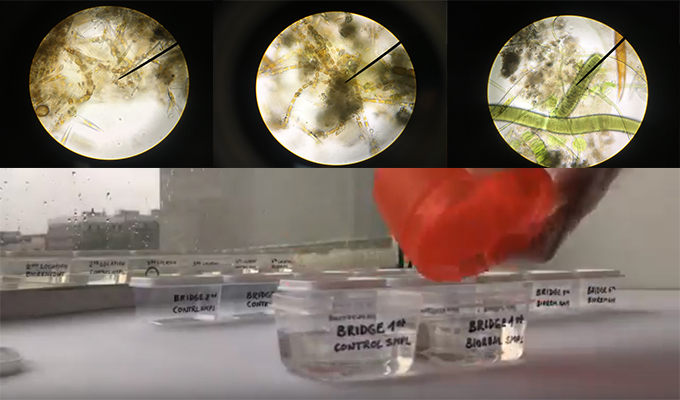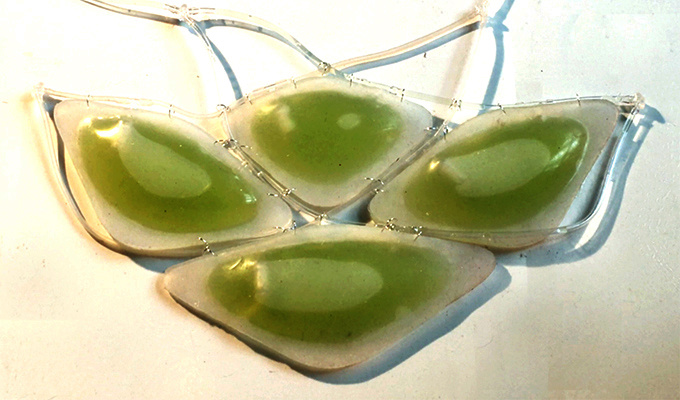  |
|||
WATER REMEDIATION |
|||
| work by students: AlexandrabBilinski, Ysabelle Gamoso, Rozina Radoncic
|
This is a hands-on course introducing students to microalgae growth and using it to bioremediate polluted water. Samples of water were collected from the Gowanus Canal in Brooklyn NY. They were analyzed before and after being mixed with microalgae during 10 days. The results revealed that spirulina microalgae species were highly efficient and having a potential to reduce pH, total dissolved solids (TDS), nitrate, ammonia, phosphate, sulphate, calcium, magnesium, sodium, potassium, heavy metals (Zn, Cu, Mn, Ni, Co, Fe and Cr) and the number of total Coli-form bacteria after 10 days of treatment compared to the untreated water samples. Microalgae culture offers an interesting step for wastewater treatments, because they provide a tertiary biotreatment coupled with the production of potentially valuable biomass, which can be used for several purposes. | ||
| All content © Diniz & Melendez | |||